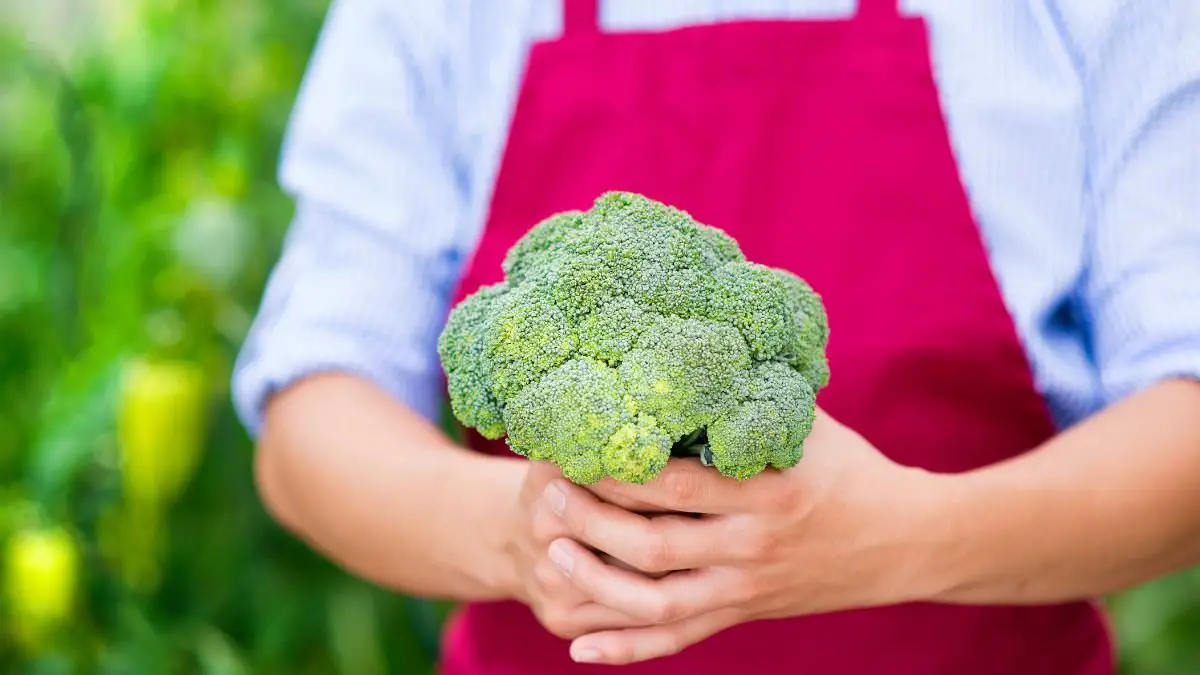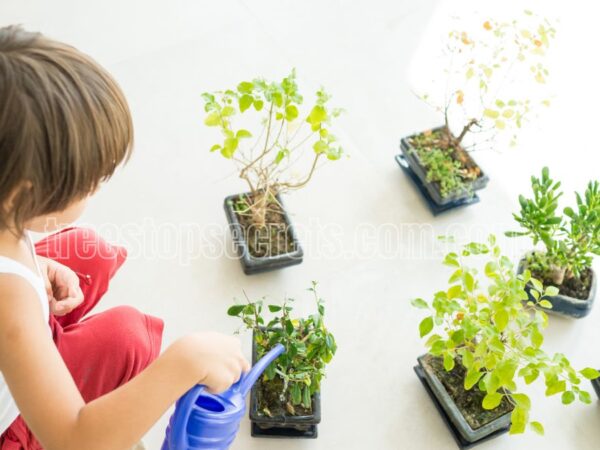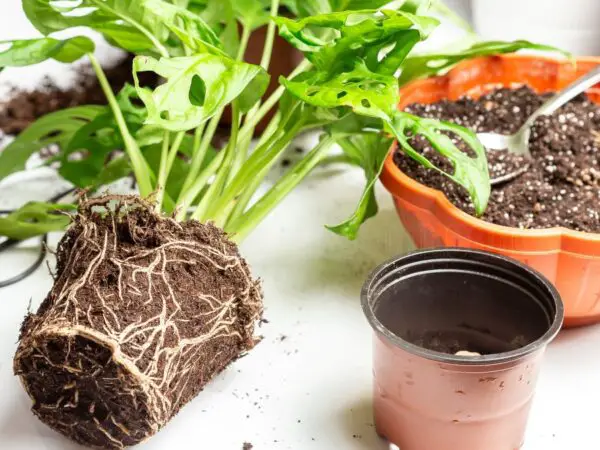If you're wondering when the best time to harvest broccoli, a season crop, with flower buds is in your vegetable garden, you've come to the right place. Knowing the ideal moment to pick your broccoli ensures maximum flavor and nutrition. From planting to harvesting, understanding the growth cycle of this nutritious vegetable is key. Stay tuned as we delve into the optimal time for harvesting broccoli buds in spring season and how to spot those telltale signs that it's ready for picking.
Discovering the perfect timing for harvesting your broccoli can make a significant difference in its taste and texture. By learning when to harvest this cruciferous veggie, you can enjoy its freshness at its peak. Let's explore the ins and outs of broccoli harvesting together.
Key Takeaways
- Recognize the Signs: Harvest broccoli when the head is firm, tight, and deep green in color with closed buds to ensure optimal taste and nutrition.
- Prepare Properly: Get ready to harvest by having sharp shears or a knife on hand and inspecting the broccoli for readiness.
- Harvest with Care: Cut the main head at an angle to encourage regrowth of side shoots for continued harvesting.
- Care Post-Harvest: Immediately place harvested broccoli in cool water and store in the refrigerator to maintain freshness.
- Store Correctly: Keep broccoli in a plastic bag in the refrigerator crisper drawer to extend its shelf life.
- Address Issues Promptly: Address any harvest problems like yellowing florets or pests promptly to ensure healthy broccoli growth.
Recognizing Harvest Time
Signs of Readiness
When harvesting broccoli, look for deep green heads with tightly packed buds. Harvest when the main head stops growing to ensure optimal taste. If the broccoli starts to flower or turn yellow, act promptly to avoid bitterness.
Ideal Harvest Period
For the best flavor, harvest broccoli in the morning when it's most crisp and fresh. Leave 2-3 inches of the main stem intact to encourage side shoot growth. Ensure the broccoli head remains deep green, free from any signs of yellowing.
Size and Color Indicators
Before harvesting side shoots, check for their firmness and ideal color. Harvest side shoots once they reach their peak color for maximum taste. While side shoots may have more open heads, they are equally delicious when cooked.
Preparing to Harvest
Required Tools
To harvest broccoli, use sharp scissors or a knife to cut the stems without causing damage. No specialized tools are necessary; basic cutting tools work well. Keep your tools clean and sharp for efficient and smooth harvesting.
Best Time of Day
For optimal flavor, it is best to harvest broccoli in the morning. Avoid harvesting during the hottest parts of the day to prevent wilting. Cooler temperatures help preserve the freshness of the harvested broccoli.
Harvesting Techniques
Cutting Method
When harvesting broccoli, cut the broccoli head with a clean, sharp tool to ensure a smooth process. This helps in preventing any damage to the plant. Make sure to cut at an angle to facilitate water runoff and reduce the risk of diseases affecting the plant.
Handling Stalks
After harvesting, it's essential to leave 2-3 inches of the main stem intact. This ensures that the plant can continue to grow and produce more side shoots. The stalks that are left behind can be composted, contributing to sustainable gardening practices. Remember to remove any remaining leaves from the stalks for better storage and handling.
Secondary Shoots
Once the main head is harvested, anticipate the growth of numerous side shoots in most broccoli varieties. These side shoots usually mature after the primary head has been harvested. To determine when to harvest these side shoots, pay attention to their color and firmness, ensuring they are at their peak freshness.
After Harvest Care
Cooling Immediately
Cool harvested broccoli promptly to retain freshness. Store in a cool place post-harvest for optimal preservation. Rapid cooling helps preserve the broccoli's nutrients.
Cleaning Process
Rinse harvested broccoli under cold water to remove dirt or debris. Pat dry with a clean towel before storage to maintain freshness.
Storing Broccoli
Refrigeration Tips
Refrigerate broccoli in a perforated plastic bag to maintain freshness. Keep it away from ethylene-producing fruits like apples. Consume within a few days for optimal taste and texture.
Freezing Methods
Blanch harvested broccoli before freezing to preserve its quality. Pack blanched broccoli in airtight containers or freezer bags for storage. Label containers with the freezing date for easy tracking.
Shelf Life Extension
Properly store fresh broccoli to prolong its shelf life. Regularly inspect stored broccoli for any signs of spoilage. Ideal storage conditions can significantly extend the shelf life of broccoli.
Troubleshooting Harvest Issues
Bolting Broccoli
Broccoli plants can bolt, or flower prematurely, if not harvested promptly. Prevent this by harvesting broccoli when the heads are tight and compact. High temperatures trigger bolting in broccoli plants, so monitor the weather closely.
Insect Damage
Inspect broccoli regularly for signs of insect infestation such as holes or chewed leaves. Treat any insect-damaged broccoli promptly to prevent further damage. Consider using organic pest control methods like neem oil to protect your crops.
Rot Problems
Proper air circulation is crucial to prevent rot in broccoli heads. Ensure that your stored broccoli has adequate ventilation to avoid moisture buildup. If you notice any signs of rot, discard the affected broccoli immediately to prevent it from spreading.
Enhancing Broccoli Yield
Soil and Water
To boost broccoli yield, ensure plants are in well-draining soil, consistently watered to maintain moisture. Mulching helps retain soil moisture.
Plant broccoli where it gets full sun exposure and provide adequate spacing based on variety recommendations. Healthy growth requires sufficient sunlight.
For optimal growth, fertilize broccoli with balanced nutrients following recommended schedules. Avoid over-fertilizing to prevent nutrient imbalances.
Sunlight and Space
- Pros: Healthy growth, optimal yield
- Cons: Overexposure can harm plants
Fertilization Strategies
- Ensure balanced nutrient application.
- Follow recommended fertilization schedules.
- Avoid over-fertilizing to prevent nutrient imbalances.
Closing Thoughts
You've learned how to identify the perfect time to harvest broccoli, the techniques to use, and how to care for it post-harvest. Remember, a well-tended broccoli plant yields bountifully. By following these steps diligently, you ensure a plentiful supply of fresh broccoli on your table.
Now that you're equipped with the knowledge to harvest and care for broccoli effectively, put your newfound skills into practice. Share this information with other gardening enthusiasts or try growing different varieties for a diverse harvest. Keep nurturing your green thumb and enjoy the fruits – or in this case, the veggies – of your labor!
Frequently Asked Questions
When is the right time to harvest broccoli?
Broccoli is ready for harvest when the head is firm, deep green, and around 6-8 inches in diameter. Avoid waiting too long as overripe broccoli may turn yellow or start flowering.
How do I prepare for harvesting broccoli?
Before harvesting, ensure you have sharp garden shears or a knife for cutting the stems cleanly. Have a container ready to collect the harvested broccoli heads and wear gloves if desired.
What are some effective techniques for harvesting broccoli?
To harvest broccoli, cut the main head at an angle about 5 inches down the stem. This encourages side shoots to grow. Use a sharp tool to prevent damage and avoid tearing the plant.
What care should I provide after harvesting broccoli?
After harvesting, store broccoli in a cool place or refrigerate it promptly to maintain freshness. You can also blanch and freeze it for longer storage periods without compromising taste and quality.
How should I store harvested broccoli?
Store freshly harvested broccoli in perforated plastic bags in the refrigerator's crisper drawer. Properly stored, it can last for up to a week. Alternatively, you can blanch and freeze broccoli for long-term storage.
Is there any troubleshooting advice for common harvest issues with broccoli?
Common issues during broccoli harvest include premature bolting or small heads. Ensure consistent watering, proper spacing during planting, and timely harvesting to prevent these problems and maximize your yield.
How can I enhance my broccoli yield during harvest season?
To enhance your broccoli yield, maintain consistent soil moisture levels, provide adequate nutrients through fertilization, control pests effectively, and practice crop rotation. Regular monitoring of plant health can help identify issues early on for timely intervention.
Image Source: Paid image from CANVA





